丝路概说
- 交通路线
- 长安与丝绸之路
- 从长安到罗马——汉唐丝路全程探行纪实上
- 从长安到罗马——汉唐丝路全程探行纪实下
- 海上丝路史话
- 丝绸之路史研究
- 早期丝绸之路探微
- 早期丝绸之路文献研究
- 中西丝路文化史
- 沧桑大美丝绸之路
- 传播友谊的丝绸之路
- 路途漫漫丝貂情——明清东北亚丝绸之路研究
- 世界的中国——丝绸之路
- 丝绸之路
- 丝绸之路寻找失落的世界遗产
- 丝绸之路2000年
- 丝绸之路——从西安至帕米尔
- 丝绸之路经济带发展报告2014
- 丝绸之路考古十五讲
- 丝绸之路——神秘古国
- 丝绸之路——沿线城镇的兴衰
- 丝绸之路在中国
- 丝路景观
- 丝路起点长安
- 丝路文化新聚焦
- 丝路之光——创新思维与科技创新实践
- 中国丝绸之路交通史
- 中华文明史话-敦煌史话
- 中国·北海合浦海上丝绸之路始发港理论研讨会论文集
- 丝绸之路
- 丝绸之路新史
- 西域考古文存
- 丝绸之路的起源
▲吐鲁番
作者:方明
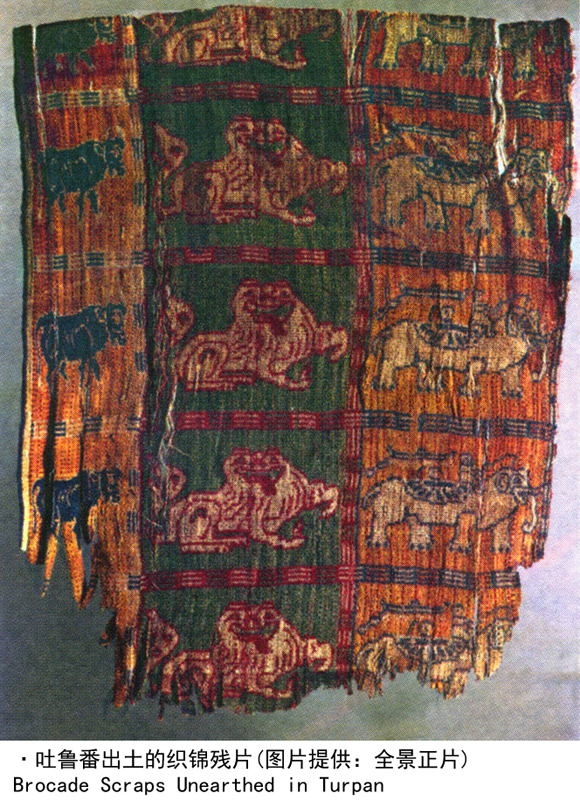
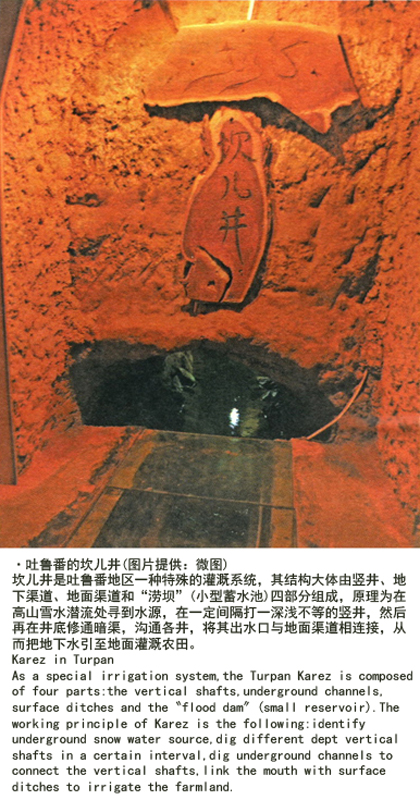
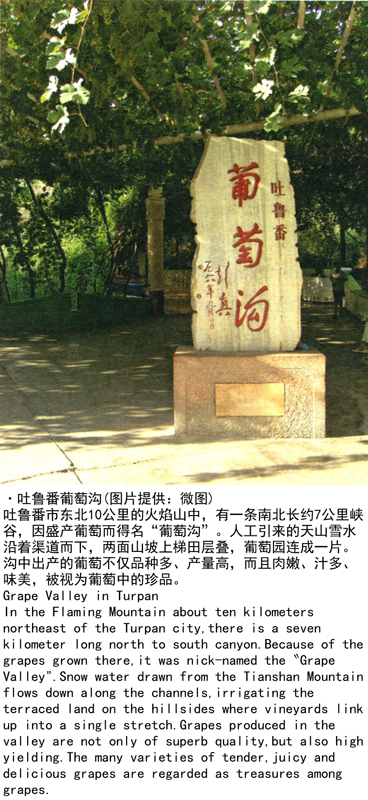
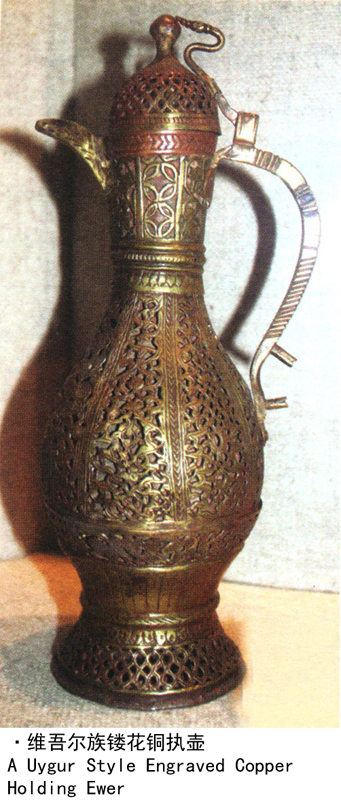
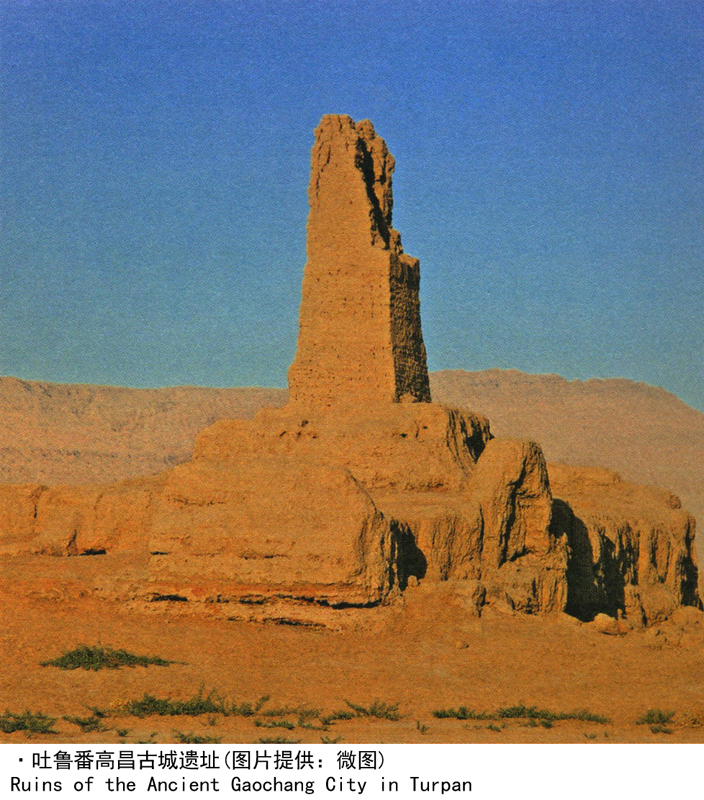
吐鲁番位于新疆中东部,天山东部的山间盆地,自古以来就是中国内地连接新疆及中亚地区,以及南、北疆的交通枢纽,也是古丝绸之路上的重镇。
早在距今六七千年前的新石器时代,吐鲁番地区就有了人类活动。据《史记》记载,秦汉时期吐鲁番盆地一带称为“姑师”。汉代时,这里是车师前国的领地。公元前99年至前72年,西汉与匈奴为控制西域而接连发生大战,最终以匈奴失败告终,车师前国随之降汉,正式纳入中国的版图。公元前68年,西汉侍郎郑吉率兵在车师屯田。公元前60年,西汉在乌垒(今轮台县境内)设西域都护府,总摄西域军政事务,把原来车师人的领地划分为八国,分而治之,其中车师前国在吐鲁番盆地。吐鲁番盆地由此形成了一个独立的王国,都城设在交河城。据记载,当时交河城内有人家百户、6000人口。公元前48年,西汉朝廷在高昌设立戊己校尉,负责屯田事宜,这标志着中原汉族已开始正式在吐鲁番地区定居,给这里带来了中原先进的生产技术和文化。
前凉时期(320—376),吐鲁番地区置高昌郡,设田地县,隶属沙州(即今敦煌)。北魏时期,柔然人在此建立了高昌国。公元450年,北凉残余势力灭了车师前国后,高昌城一跃成为吐鲁番盆地的政治、经济、文化中心。640年,唐朝统一高昌,在此设立西州,辖高昌、交河、柳州、天山、蒲昌五县。
汉唐以来,吐鲁番地区是连接中原与中亚、欧洲的枢纽,经贸活动十分活跃,一些宗教先后经由高昌传入内地。唐代高僧玄奘沿丝绸之路去往古印度取经求法,就曾在高昌停驻,诵经讲法,还与高昌王结拜为兄弟,留下一段佳话。直至今日,吐鲁番依然是东西方文化和宗教交织与融合的地方,也是丝绸之路遗址最为丰富的地区,遗存的古城、石窟寺、烽燧、墓葬、岩画等达200余处。在新疆历史博物馆收藏的西汉到唐代的丝绸之路文物中,80%以上出自吐鲁番。
吐鲁番地区也是维吾尔文化的中心之一。维吾尔族的祖先是古代回鹘人,他们于9世纪进入西域后最早就聚居在吐鲁番。维吾尔族的音乐、舞蹈、服饰、宗教、礼仪、餐饮和生活习俗、建筑风格等各个方面,都独具魅力,其中最具代表性的吐鲁番歌舞文化,不仅在新疆地区广泛流行,而且成为人们心日中维吾尔族风情的一个标志。
>Turpan
Lying in the mountain basin at the east of the Tianshan Mountain in the central-eastern part of Xinjiang,Turpan has been the transportation hub linking the Central Plains with Central Asia,as well as southern Xinjiang with northern Xinjiang since ancient times.Naturally Turpan has always been an important town on the ancient Silk Road.
Human activities started in the Turpan area as early as during the Neolithic Age some six thousand to seven thousand years ago.According to Historical Records,the Turpan Basin area was called〝Gushi"during the Qin and the Han Dynasty periods.During the Han Dynasty,Turpan was controlled by the Former Cheshi Kingdom.Between 99 B.C.to 72 B.C.,wars frequently broke out between the Western Han and the Huns to compete for the control of the Western Regions.With the ultimate failure of the Huns,Former Cheshi surrendered to the Han Dynasty and was formally incorporated into the Han Dynasty map.In 68 B.C.,Zheng Ji,a senior imperial guard of the Western Han Dynasty lead his troops to reclaim land at Former Cheshi.In 60 B.C.,Western Han set up the Western Regions Frontier Command in Wulei(present-day Luntai County)to manage all political and military issues pertaining to the Western Regions.Western Han also divided the Former Cheshi territory into eight countries and ruled them separately.Former Cheshi was allocated the Turpan Basin area.Since then Turpan became an independent kingdom,with Jiaohe as its capital city.According to records,Jiaohe city had about one hundred households with six thousand population.In 48 B.C.,the Western Han imperial court introduced the post of Wuji administrator in Gaochang,to be responsible for land reclamation matters.This was a landmark event marking the beginning of the formal settlement of Han Chinese from the Central Plains in the Turpan region.Along with their settlement,the Hans also brought to the Turpan region advanced production technologies and the Han Chinese culture.
During the Early Liang Period(320-376),Gaochang and Tiandi County were set up in the Turpan region under Shazhou City(present-day Dunhuang).During the Northern Wei Period,Rouran people established the Gaochang Kingdom.In 450,when Northern Liang's remnant forces eliminated the Former Cheshi Kingdom,Gaochang city became the political,economic and cultural center of the Tarim Basin.In 640,the Tang Dynasty unified Gaochang and set up a Western Prefecture there to administer five counties including Gaochang,Jiaohe,Liuzhou,Tianshan and Puchang.
Since the Han and Tang dynasties,Turpan region has served as the juncture between the Central Plains and Central Asia and Europe.Economic and trade activities have been very active.Some religions of the world entered the inland via Gaochang.When the Tang Dynasty master monk Xuanzang traveled along the Silk Road to ancient India to study Buddhism,he stopped over in Gaochang where he preached Buddhism and sworn brothers with the Gaochang King,leaving a touching story for later generations.Until today,Turpan is still the place where the eastern and western cultures and religions met and integrated.Turpan hosts the most ruins of the Silk Road with more than two hundred heritage sites such as the ancient city,the grotto temple,the beacon towers,the tombs,the mural paintings,etc.Of the cultural relics on the Silk Road from the Western Han to the Tang Dynasty kept at the Xinjiang History Museum,more than 80% came from Turpan.
Turpan region is also one of the centers of the Uygur culture.Ancestors of the Uygurs were ancient Uighurs,who entered the Western Regions in the 9th century and settled down in the Turpan region first.Many aspects of the Uygur life exude unique charm such as their music,dance,costumes,religion,rituals,food,customs,and even architectural styles.The most typical Turpan song and dance are not only very popular in the Xinjiang region,but have become a symbol of the Uygur style.
高昌古城
高昌古城遗址位于新疆维吾尔自治区吐鲁番市东约40公里,肇始于汉魏晋时期的高昌壁,历时1400余年,元末明初时荒废。现存的高昌古城遗址是高昌回鹘时期在唐代高昌城基础上改建增筑的,分内城、外城两部分,内城主要为宫城及寺院建筑,外城有寺院及民居遗址。外城周长约10里,平面略呈不规则的方形,城墙残高约5—11.5米,以土夯筑,遗存5座城门缺口。内城大致位于外城的中间,城周约7里,平面略呈南北长方形。内城中间偏北有一组堡垒式建筑,内有残高约15米的土坯塔及一些殿基残迹,俗称“可汉堡”,似为宫城。城内遗物种类繁多,其中以回鹘时期的摩尼教壁画、经典、文书,佛教壁画、塑像、经典及不同文种的文书数量最多而著名。
Ancient Gaochang City
Ruins of the ancient Gaochang city is located about fifty kilometers east of Turpan city.Gaochang Wall,built during the Han,Wei and Jin periods and abandoned during the Yuan and the Ming Periods lasted 1,400 years.The existing Gaochang ruins were built when it was ruled by the Uighurs on the basis of the Tang Dynasty structure.The ruins are divided into two parts,the inner city and the outer city.While the inner city is comprised of palaces and temples,the outer city is comprised of temples and residential houses.The outer city is about five kilometers in perimeter,and the plan view of the city is a slightly irregular square.The remaining rammed earth city walls range from 5-11.5 meters high,with five open gates.The inner city is located in the center of the outer city and is 3.5 kilometer in perimeter.The plan view of the inner city is slightly rectangle north to south.In the northern part of the inner city there is a group of castle-like buildings.Among the ruins,there is a fifteen meter high earth pagoda and some remnants of palace corner stones.The site is known as the〝Khan's Castle",looks like the imperial palace.There are many cultural relics in the inner city.The most famous ones include Manichaean mural paintings,classics,documents during the Uighur-ruled period as well as Buddhist murals,statues,classics and documents in different languages.
丝绸之路/方明编著.-合肥: 黄山书社, 2013;